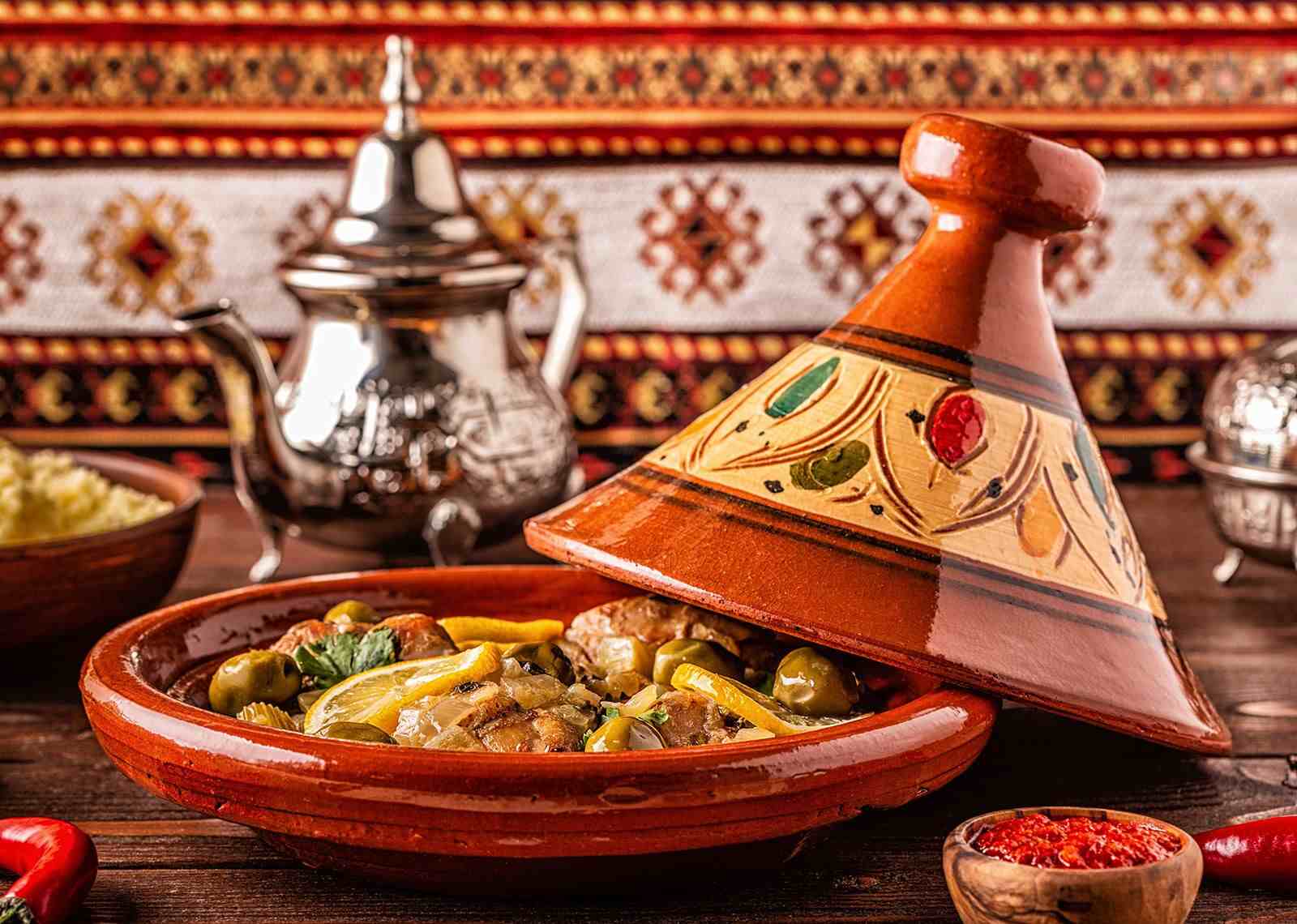To travel to Morocco is to embark on a sensory journey, and nowhere is this more evident than in its cuisine. Moroccan food is a rich tapestry of flavors, aromas, and traditions, woven from a history of Berber, Arab, Andalusian, and French influences. From slow-cooked, aromatic stews to delectable street-side snacks, this guide will help you discover what to eat in Morocco and ensure you don't miss a single delicious bite.
The Cornerstones of Moroccan Cuisine: Must-Try Main Dishes
At the heart of Moroccan dining are communal, slow-cooked dishes that are rich with spices and history. These are the meals you'll find in homes, humble cafes, and elegant riads across the country.
1. Tagine: The Iconic Earthenware Stew
If there is one dish synonymous with Morocco, it is the tagine. Named after the conical earthenware pot in which it is slow-cooked, a tagine is a succulent, fragrant stew. The cone-shaped lid traps steam and returns the condensed liquid to the pot, resulting in incredibly tender meat and flavorful vegetables. Common varieties include lamb with prunes and almonds, chicken with preserved lemons and olives, and Kefta (meatball) with eggs. Vegetarian versions with a medley of seasonal vegetables are also widely available and delicious.

2. Couscous: The Friday Tradition
Couscous is more than just a dish; it's a weekly tradition. While available any day for tourists, Moroccans traditionally eat couscous on Fridays after midday prayers. It consists of fine wheat pasta steamed until fluffy and served with a hearty stew of meat (often lamb or chicken) and a variety of vegetables like carrots, turnips, and courgettes. The most famous version is "Couscous a Sept Legumes" (seven-vegetable couscous). It's a celebratory, communal dish meant to be shared.
3. Pastilla (B'stilla): Sweet and Savory Perfection
For a truly unique flavor experience, you must try Pastilla. This intricate pie is a specialty from Fes, featuring layers of paper-thin pastry filled with shredded pigeon or chicken, almonds, and spices like cinnamon and saffron. The top is dusted with powdered sugar and cinnamon, creating an unforgettable sweet and savory combination. A seafood version is also popular along the coast.
Exploring Moroccan Street Food: A Culinary Adventure
The true pulse of Moroccan cuisine can be found on its streets. The food stalls in the medinas and squares like Marrakech's Jemaa el-Fnaa offer an incredible array of cheap, fast, and delicious eats.
What to Eat on the Streets:
- Bessara: A rich fava bean or split pea soup, drizzled with olive oil and cumin. It's a popular breakfast for locals, guaranteed to warm you up.
- Maakouda: Deliciously spiced potato fritters, often served plain or stuffed into a piece of bread (khobz) for a cheap and filling sandwich.
- Grilled Sardines: Especially along the coast in cities like Essaouira, you'll find vendors grilling fresh sardines, often stuffed with a flavorful chermoula marinade.
- Snail Soup (Babbouche): Don't be shy! This broth, seasoned with a secret blend of spices, is a local delicacy believed to have digestive and healing properties. You'll see steam rising from large pots in many squares.
- Harira: While a staple during Ramadan, this hearty tomato, lentil, and chickpea soup is available year-round and is a perfect light meal or starter.
"The food tour in Marrakech was the best thing we did! We tried things we never would have on our own, like the snail soup and the incredible 'tanjia' from a street stall. The guide was fantastic and explained so much about the food culture. Highly recommend!"
Don't Forget the Drinks: The Art of Mint Tea
In Morocco, mint tea is more than just a drink; it's a symbol of hospitality, friendship, and tradition. Known as "Berber whiskey," it's a sweet, fragrant green tea brewed with heaps of fresh spearmint leaves and sugar. You will be offered tea everywhere you go—in shops, in homes, and after meals. Accepting is a sign of politeness, and watching it being poured from a height to create a frothy head is part of the experience.
FAQ: Your Moroccan Food Questions Answered
Is Moroccan food very spicy?
Moroccan food is flavorful and aromatic, but not typically "hot" spicy like Thai or Indian food. It uses a rich blend of spices like cumin, turmeric, ginger, saffron, and cinnamon. Harissa, a spicy chili paste, is often served on the side for those who like more heat.
Are there good options for vegetarians?
Yes! Morocco is very vegetarian-friendly. Vegetable tagines and couscous are available everywhere. You'll also find plenty of delicious salads, lentil dishes (zaalouk), and bread-based snacks. Just be sure to specify "sans viande" (without meat).
Can you drink alcohol in Morocco?
As a Muslim country, alcohol is not widely consumed by the population, but it is available to tourists. Many upscale hotels, riads, and restaurants licensed for tourists serve alcohol. You can also find it in larger supermarkets like Carrefour.